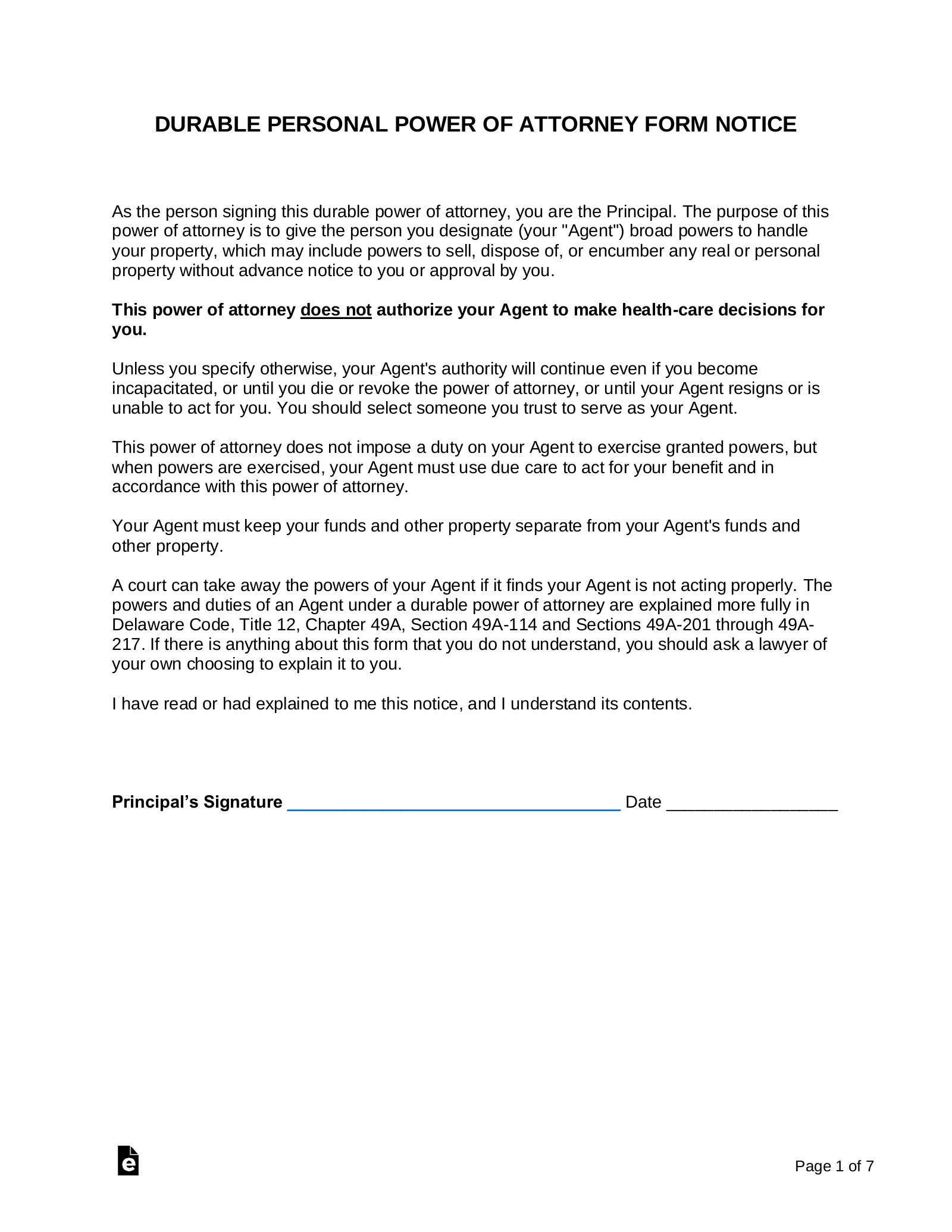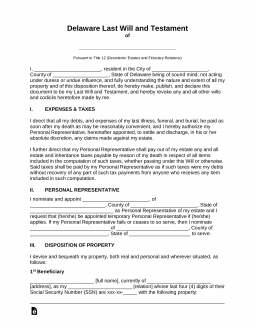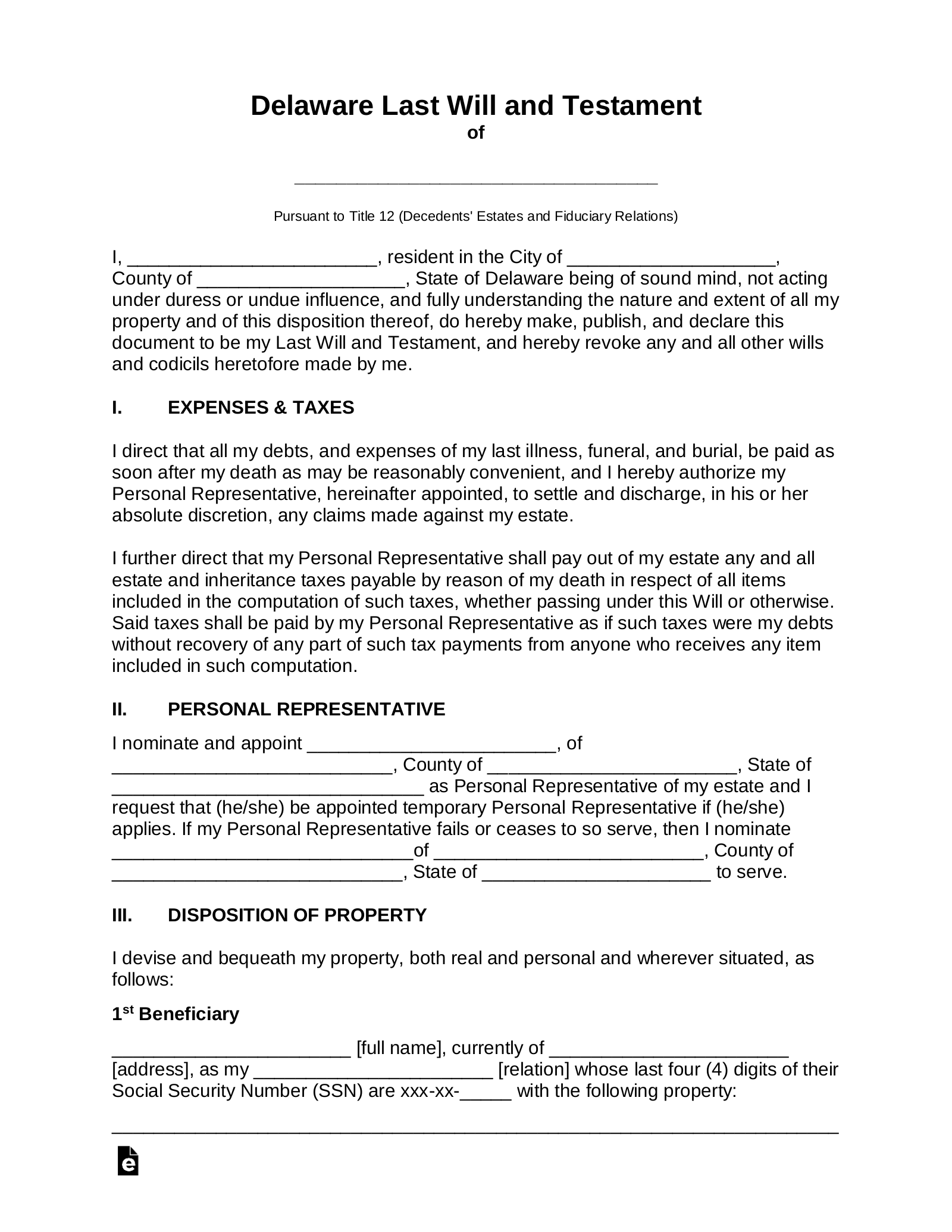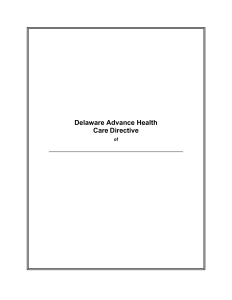Updated November 15, 2023
A Delaware last will and testament is a document used by an individual (“testator”) to ensure their estate is distributed according to their wishes after their death. Under Delaware law, the document does not need to be executed in the state, nor does it require the testator to have assets located solely in Delaware.
Signing Requirements
The signing must be in the presence of two or more credible witnesses.[1]
Related Forms
Download: PDF
 Durable (Financial) Power of Attorney
Durable (Financial) Power of Attorney
Download: PDF, MS Word, OpenDocument



